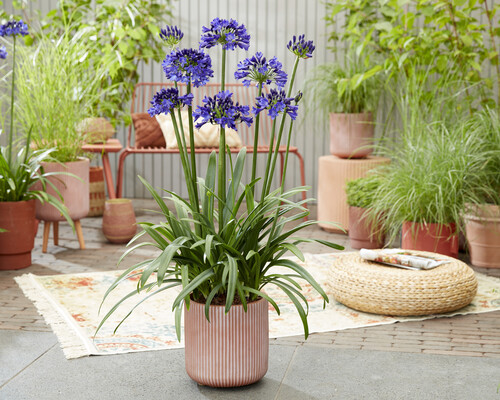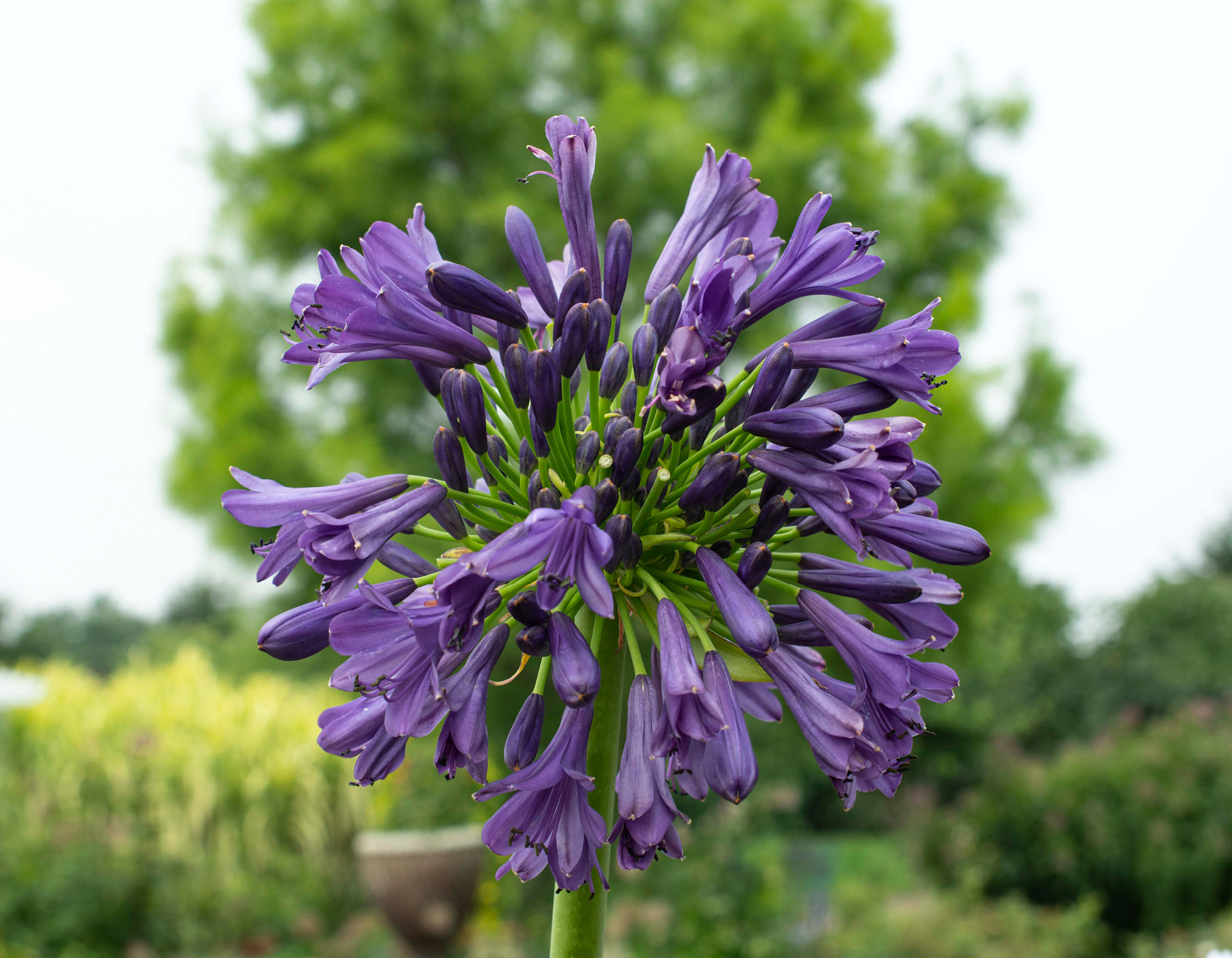Agapanthus Varieties: Choosing the very best for Your Landscape
Agapanthus Varieties: Choosing the very best for Your Landscape
Blog Article
Letting Loose the Secret to Successful Agapanthus Farming: Idea for a Flourishing Yard
In the realm of gardening, growing agapanthus effectively needs a strategic approach that encompasses numerous elements of plant treatment. With mindful interest to information, one can unlock the tricks to nurturing these stunning blossoms, causing a yard that prospers with elegance and vibrancy. By understanding the subtleties of agapanthus growing, one can develop an environment where these plants thrive and bloom perfectly. In the following discussion, we will certainly discover essential tips and tricks that will guide you towards a flourishing agapanthus yard, providing understandings right into ideal techniques, soil problems, watering techniques, and a lot more.
Planting Agapanthus: Best Practices
When planting Agapanthus, appropriate soil prep work is vital for making certain effective development and growth of these stunning blossoms. Agapanthus, frequently called Lily of the Nile or African lily, prospers in well-draining dirt with a slightly acidic to neutral pH level - Agapanthus. Prior to planting, it is essential to change heavy clay dirts with natural issue such as compost or peat moss to enhance water drainage and supply necessary nutrients for the plants
To grow Agapanthus, pick a location that gets complete sunshine to partial shade, as this will advertise healthy development and plentiful blooming. Dig a hole two times the size of the plant's origin ball and position the Agapanthus at the very same depth it was previously growing. Gently backfill the opening with soil, weighing down firmly to remove any type of air pockets around the origins.
Water the newly grown Agapanthus completely and remain to maintain the dirt equally moist, specifically during the plant's energetic growing season. Agapanthus. Applying a balanced plant food once a month can even more sustain the plant's growth and flowering. By adhering to these ideal practices for growing Agapanthus, you can develop a sensational display of these fascinating blossoms in your garden
Suitable Dirt Conditions for Agapanthus
For ideal growth and growing success of Agapanthus plants, making certain the soil conditions are excellent is crucial. Agapanthus flourishes in well-draining dirt with a somewhat acidic to neutral pH level ranging from 6.0 to 7.0. This kind of dirt permits appropriate water drain, avoiding waterlogging which can cause root rot. To boost soil drain, think about including natural matter such as garden compost or peat moss when preparing the planting website. Furthermore, Agapanthus favors dirt that is abundant in nutrients, so incorporating a well balanced fertilizer during the growing period can advertise healthy development and dynamic flowers.

Watering and Fertilizing Tips
To ensure healthy and balanced growth and vivid blossoms, correct watering and feeding methods are essential for effective Agapanthus farming. Agapanthus plants benefit from routine watering, specifically throughout the expanding season.
When it comes to fertilizing Agapanthus, a balanced plant food with equivalent components nitrogen, phosphorus, and potassium can be applied in the spring to promote healthy development and flowering. Slow-release fertilizers are optimal for giving nutrients slowly over an extended duration. Stay clear of over-fertilizing, as this can bring about excessive foliage growth at the expenditure of blossoms.
Additionally, incorporating raw material like garden compost into the dirt can improve nutrient degrees and enhance dirt framework, assisting in the total health and wellness of the Agapanthus plants. By following these watering and fertilizing suggestions, gardeners can guarantee their Agapanthus plants grow and create spectacular displays of flowers.
Pruning and Deadheading Strategies
Proper pruning and deadheading strategies play an important duty in maintaining the health and aesthetic appeals of Agapanthus plants, enhancing the important practices of watering this and feeding for effective growing. Pruning Agapanthus entails removing invested blossom heads, dead or yellowing fallen leaves, and total shaping of the plant to advertise much better development. Deadheading, the procedure of eliminating discolored flowers, not just improves the plant's appearance but additionally encourages additional flowering.
When deadheading Agapanthus, it is advisable to trim off the flower stem at the base using sharp, tidy shears. This procedure redirects the plant's power from seed production back right into origin and foliage development, advertising a much healthier and much more robust plant. Normal deadheading can extend the blooming duration of Agapanthus and stop self-seeding, which can cause congestion.
In regards to trimming, Agapanthus usually take advantage of a light trim after blooming to clean the plant and urge fresh growth. Reducing back the invested flower stems and getting rid of any type of dead or broken foliage helps maintain the plant's vitality and total look. Nonetheless, it is vital to prevent cutting into the crown of the plant, as this can compromise its health.

Protecting Agapanthus From Pests and Diseases
Carrying out reliable bug and disease management methods is important to guarding the wellness and vitality of Agapanthus plants in farming. One common parasite that impacts Agapanthus is the Agapanthus borer, a caterpillar that tunnels into the plant, triggering damages to the leaves and flowers.
In enhancement to pests, Agapanthus are vulnerable to illness such as origin rot and fungal fallen leave places. By remaining vigilant and resolving bug and illness concerns without delay, garden enthusiasts can aid their Agapanthus flourish and flourish.

Verdict
To conclude, successful cultivation of agapanthus requires appropriate growing methods, ideal dirt problems, adequate watering and feeding, regular trimming and deadheading, and protection from conditions and insects. By adhering to these ideas and tricks, gardeners can make certain a growing yard loaded with attractive agapanthus flowers. Agapanthus. Bear in mind to preserve regular care and focus to detail to advertise the health and wellness and long life of these magnificent plants
When planting Agapanthus, appropriate dirt prep work is important for ensuring successful development and advancement of these attractive flowers.Water the recently grown Agapanthus completely and proceed to maintain the dirt uniformly wet, specifically throughout the plant's energetic expanding period.For optimal growth and blooming success of Agapanthus plants, making sure the dirt problems are ideal is vital. When hair transplanting or growing Agapanthus, ensure the soil is well-prepared to give the needed structure for the plants to develop themselves efficiently. One common pest that affects Agapanthus is the Agapanthus borer, a caterpillar that tunnels into the plant, triggering damages to the fallen leaves and flowers.
Report this page